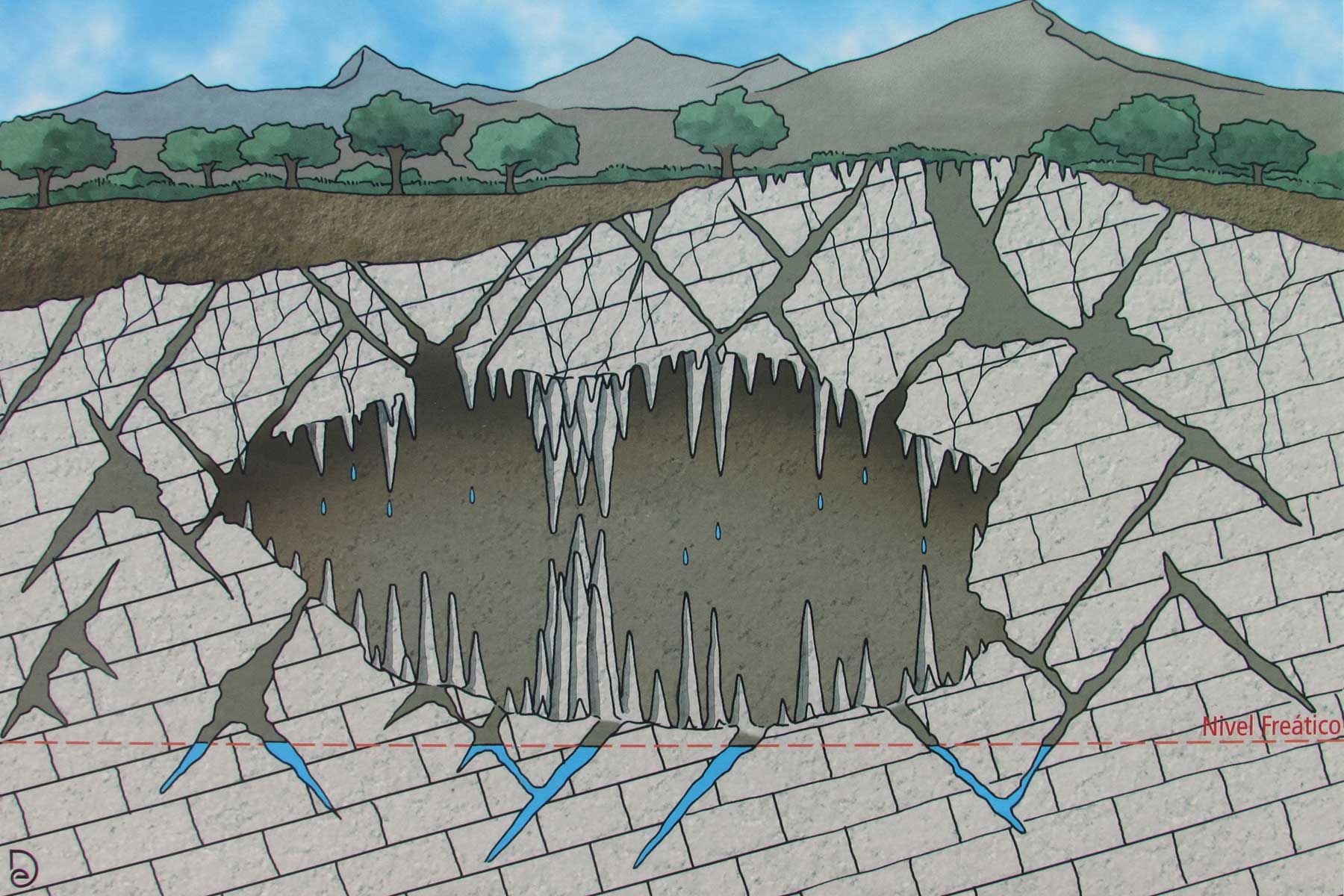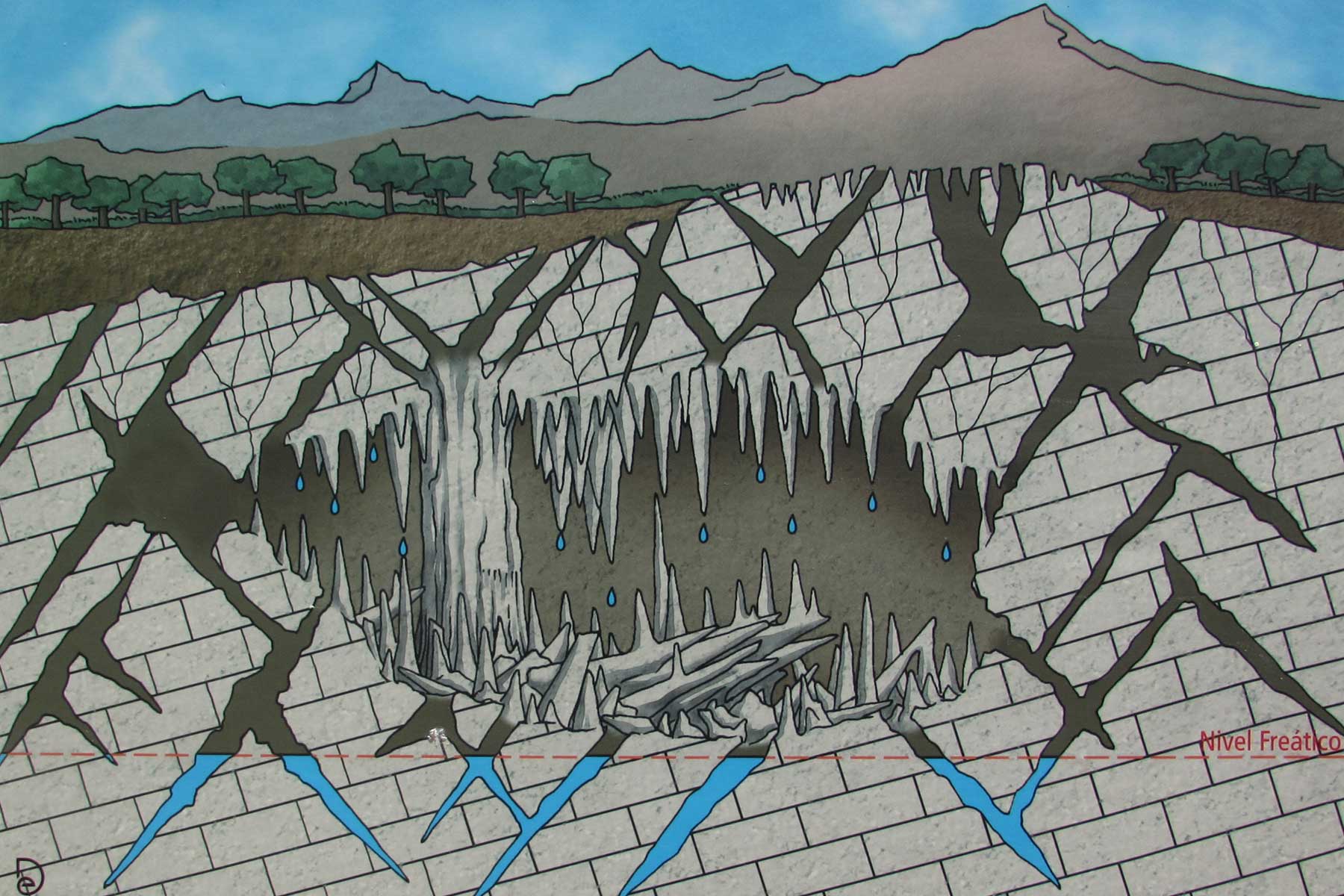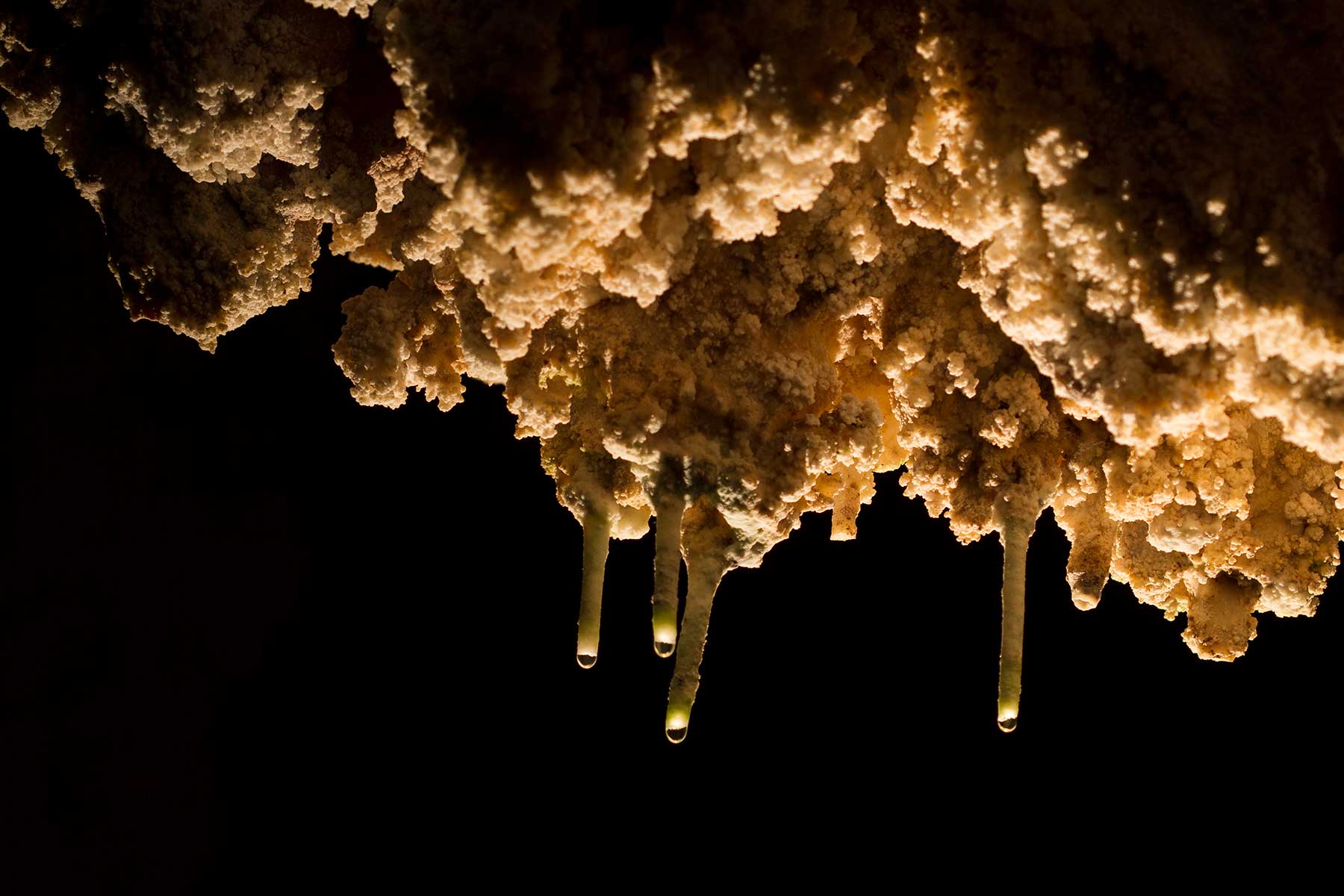Purchase your online ticket at the best price and avoid queues
Values of the Cave
Geology
With over five million years of history, the Nerja Cave is an impressive geological spectacle resulting from karstification, housing fascinating speleothems and providing crucial scientific data. Recognized internationally, this cave stands as an invaluable scientific resource and an underground natural museum.
Geology Geology Geology Geology Geology Geology Geology Geology Geology Geology Geology Geology Geology Geology Geology Geology Geology Geology Geology Geology Geology Geology Geology Geology Geology
The geological formation of the Nerja Cave
The Nerja Cave has formed through a process called karstification: rainwater dissolves carbon dioxide (CO2) from the soil and the atmosphere, becoming “acidic” and “aggressive” water that widens the cracks and fractures in the rock as it flows through them. As the dissolution progresses, different types of channels and cavities in the rock are created, which over time, merge into a large cavity. It is estimated that the infiltration and circulation of rainwater through the cracks and fractures in the marbles of Sierra Almijara, where the Nerja Cave develops, began over five million years ago.
The formation of speleothems is also linked to water. After its journey through the cracks and fractures in the rock, the water reaches the cave and degasses, meaning it loses its carbon dioxide content. At this point, the process reverses so that the water, instead of dissolving the rock, precipitates the minerals it carries dissolved on the ceiling, floor, or walls of the cavity, thus creating the different types of speleothems. The oldest speleothems in the cave are over 800,000 years old.






Image Gallery




